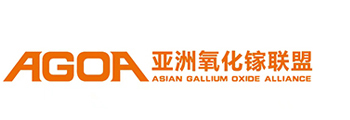

【Epitaxy Papers】Plasma damage-free in situ etching of β-Ga₂O₃ using solid-source gallium in the LPCVD system
日期:2025-09-28阅读:210
Researchers from the University of Massachusetts Lowell have published a dissertation titled "Plasma damage-free in situ etching of β-Ga2O3 using solid-source gallium in the LPCVD system" in Applied Physics Letters.
Abstract
This work demonstrates an in situ etching technique for β-Ga2O3 using solid-source metallic gallium (Ga) in a low-pressure chemical vapor deposition (LPCVD) system, enabling clean, anisotropic, plasma damage-free etching. Etching behavior was systematically studied on (-201) β-Ga2O3 films and patterned (010) β-Ga2O3 substrates as a function of temperature (1000–1100 °C), Ar carrier gas flow (80–400 sccm) and Ga source-to-substrate distance (1–5 cm). The process exhibits vapor transport- and surface-reaction-limited behavior, with etch rates reaching a maximum of ∼2.25 µm/h on (010) substrates at 1050 °C and 2 cm spacing. Etch rates decrease sharply with increasing source-to-substrate distance due to reduced Ga vapor availability, while elevated temperatures enhance surface reaction kinetics through increased Ga reactivity and suboxide formation, leading to enhanced etch rates. In-plane anisotropy studies using radial trench patterns reveal that the (100) orientation produces the most stable etch front, characterized by smooth, vertical sidewalls and minimal lateral etching, consistent with its lowest surface free energy. In contrast, orientations such as (101), which possess higher surface energy, exhibit pronounced lateral etching and micro-faceting. As the trench orientation progressively deviates from (100), lateral etching increases. Facet evolution is observed between (100) and ( -102), where stepped sidewalls composed of alternating (100) and (-102) segments progressively transition into a single inclined facet, which stabilizes along (100) or (-102) depending on the trench orientation. The (100)-aligned fins exhibit minimal bottom curvature, while (201)-aligned structures display increased under-etching and trench rounding. Collectively, these findings establish LPCVD-based in situ etching as a scalable, damage-free, and orientation-selective technique for fabricating high-aspect-ratio β-Ga2O3 3D structures in next-generation power devices.
DOI:
https://doi.org/10.1063/5.0277909


